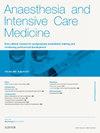产科的人为因素
IF 0.3
Q4 ANESTHESIOLOGY
引用次数: 0
摘要
人为因素和人体工程学在提高患者安全、团队绩效和临床结果方面发挥着至关重要的作用。产科遇到的动态、高风险情况需要一个功能强大的团队做出快速、协调良好的反应。了解医疗保健专业人员与其团队成员及其环境的相互作用是必不可少的。在迅速恶化的临床情况下,缺乏对形势的认识、沟通不畅和领导不力,再加上不熟悉的团队,使产科病人处于特别危险的境地。提高对人为因素和人体工程学的认识有助于促进更安全的环境。本文章由计算机程序翻译,如有差异,请以英文原文为准。
Human factors in obstetrics
Human factors and ergonomics play a crucial role in improving patient safety, team performance and clinical outcomes. The dynamic, high-risk situations encountered in obstetrics require a rapid, well-coordinated response from a highly functioning team. An understanding of the interaction of healthcare professionals with members of their team and their environment is essential. Lack of situational awareness, poor communication and inadequate leadership compounded by unfamiliar teams in a rapidly deteriorating clinical situation put obstetric patients at particular risk. An increased awareness of human factors and ergonomics can help to promote a safer environment.
求助全文
通过发布文献求助,成功后即可免费获取论文全文。
去求助
来源期刊

Anaesthesia and Intensive Care Medicine
ANESTHESIOLOGY-
CiteScore
0.50
自引率
0.00%
发文量
152
期刊介绍:
Anaesthesia and Intensive Care Medicine, an invaluable source of up-to-date information, with the curriculum of both the Primary and Final FRCA examinations covered over a three-year cycle. Published monthly this ever-updating text book will be an invaluable source for both trainee and experienced anaesthetists. The enthusiastic editorial board, under the guidance of two eminent and experienced series editors, ensures Anaesthesia and Intensive Care Medicine covers all the key topics in a comprehensive and authoritative manner. Articles now include learning objectives and eash issue features MCQs, facilitating self-directed learning and enabling readers at all levels to test their knowledge. Each issue is divided between basic scientific and clinical sections. The basic science articles include anatomy, physiology, pharmacology, physics and clinical measurement, while the clinical sections cover anaesthetic agents and techniques, assessment and perioperative management. Further sections cover audit, trials, statistics, ethical and legal medicine, and the management of acute and chronic pain.
 求助内容:
求助内容: 应助结果提醒方式:
应助结果提醒方式:


